What Is A Lava Lake?
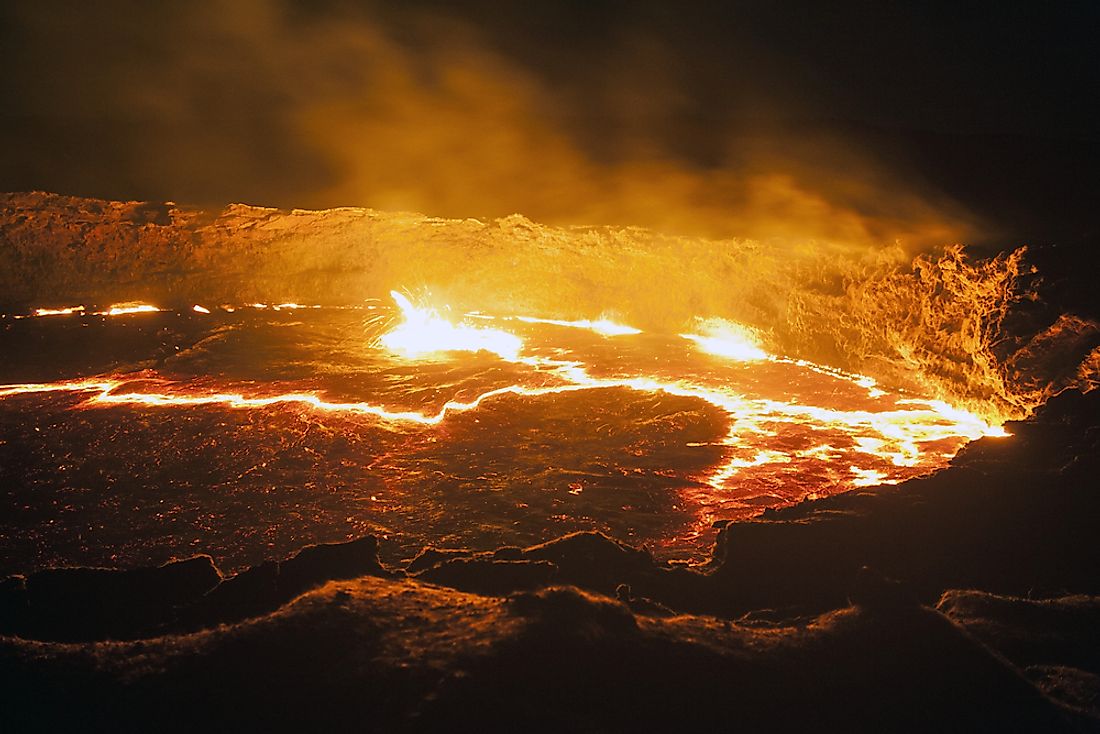
Massive volumes of molten lava contained in a broad depression, crater, or volcanic vent is called a lava lake. Lava lakes are usually basaltic in nature and can be wholly or partly molten (melted) or even solidified.
How Are Lava Lakes Formed?
Lava lakes are formed in a number of ways. When one or more vents in a volcanic crater erupt, they might partially fill up the crater itself with lava, resulting in a lava lake. Also, when lava erupting from a volcanic vent flows down to collect in another broad depression or a crater, it also gives birth to a lava lake.
Are Lava Lakes Permanent In Nature?
Lava lakes are hardly persistent in nature. Only in rare cases, lava lakes have persisted in a few volcanoes. Examples of the world's most significant existing lava lakes are presented below.
4. Erta Ale, Ethiopia
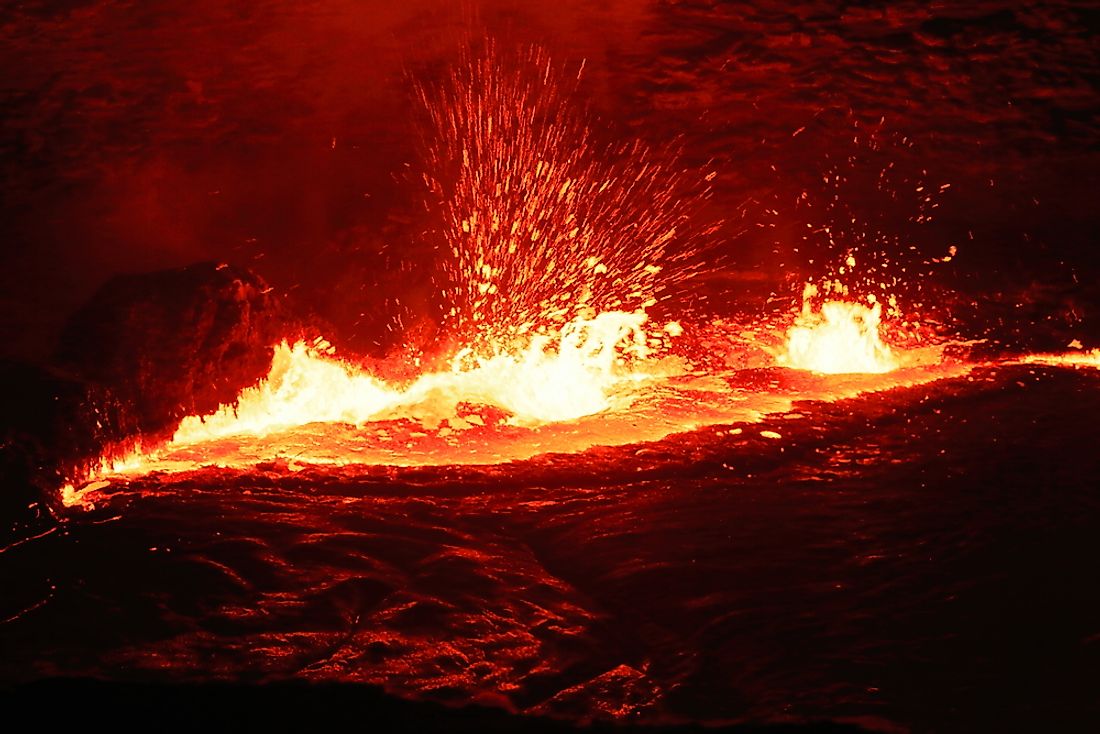
Erta Ale is a 2011 foot high active basaltic shield volcano located in Ethiopia. The volcano hosts two active lava lakes at its summit. The lava from these lakes occasionally overflows on to the volcano’s south side.
3. Mount Nyiragongo
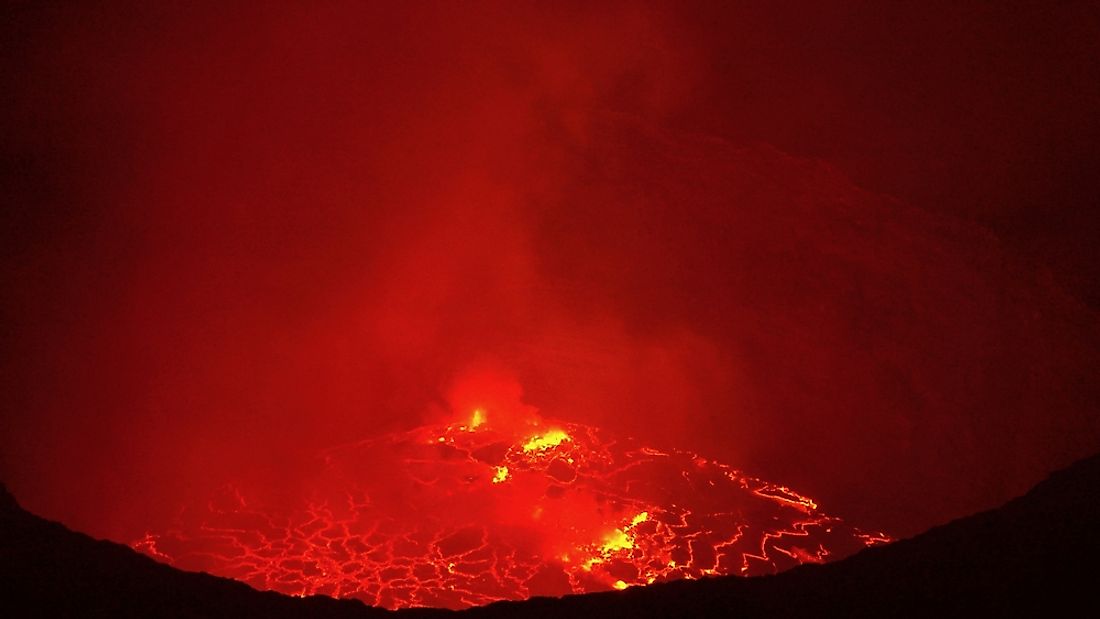
Mount Nyiragongo is an active stratovolcano that has an elevation of 11380 feet. The volcano is located in the Virunga Mountains inside the Virunga National Park in the Democratic Republic of the Congo (DRC). The volcano hosts a massive lava lake that is considered to be the largest of its kind by surface area and volume, at least in recent history. It measured over 2200 feet wide as of 1982.
2. Kīlauea, Big Island, Hawaii
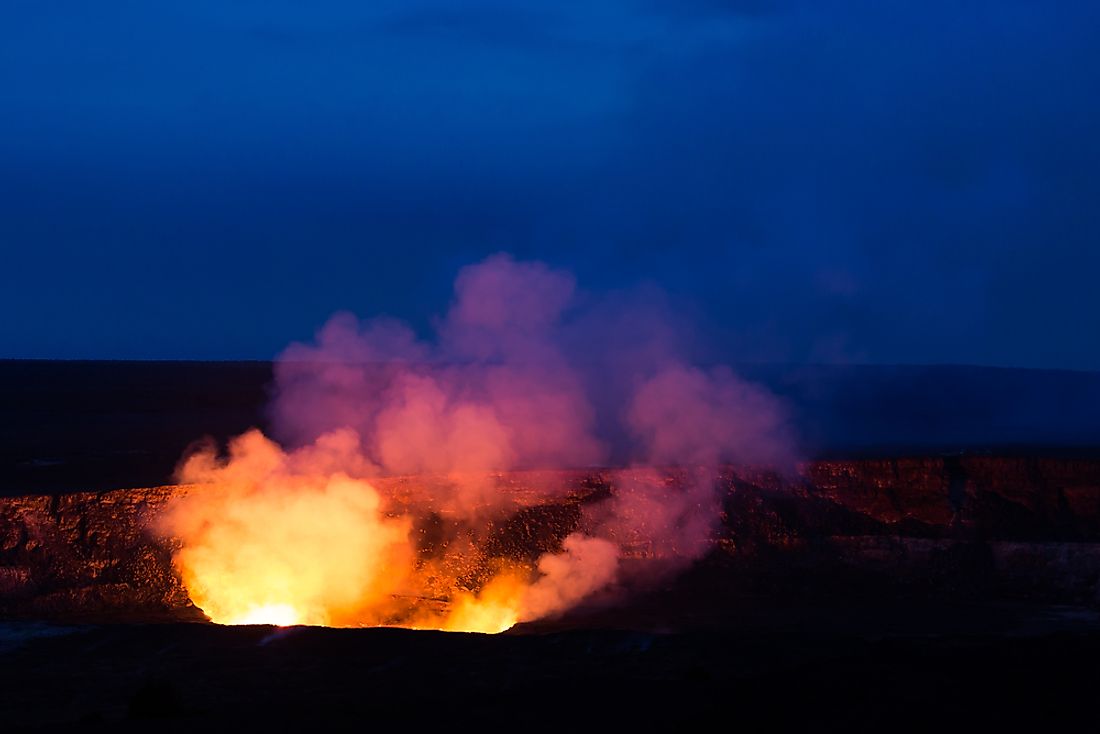
Kīlauea is an active shield volcano on the Big Island of Hawaii. It hosts two persistent lava lakes. The Halemaʻumaʻu vent cavity with the summit caldera hosts one of the lava lakes. The other such lake is located within the Puʻu ʻŌʻō cone on the volcano’s east rift zone.
1. Ambrym, Vanuatu
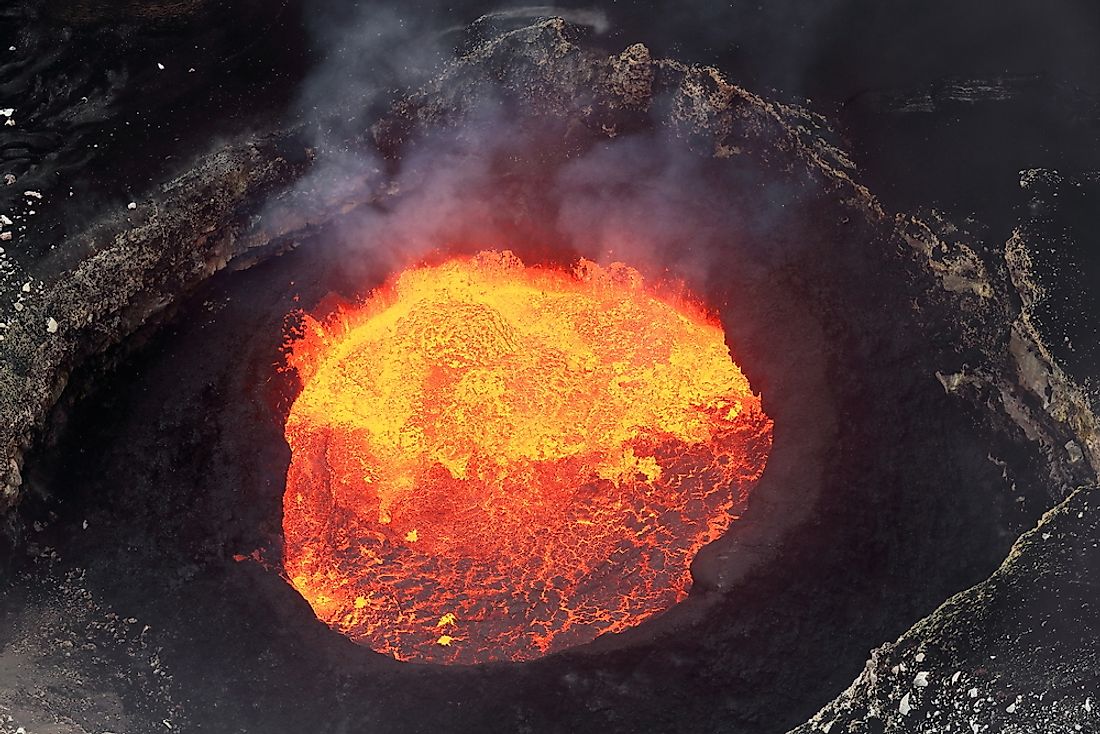
Ambrym is a volcanic island that is part of the archipelago of Vanuatu’s Malampa Province, in the South Pacific Ocean. The island is famous for the lava lakes located in the two craters near the summit of the island’s volcanic peak.











